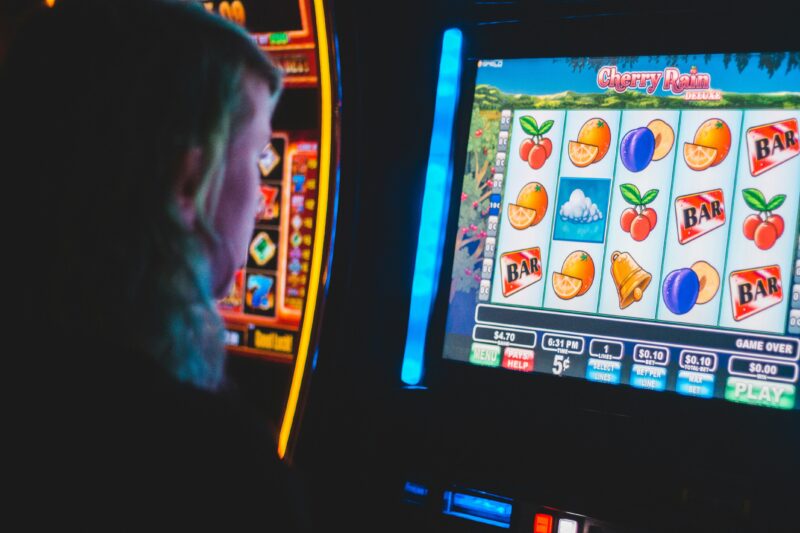Innovation-ready semiotic analysis of Australian cities: Which are leading? Which are pushing against the myth?
In the 21st century, cities are no longer defined solely by their infrastructure or geography—they are defined by their symbolism and narratives. These semiotic cues shape how cities are perceived and how they communicate their readiness for innovation to residents, investors, and global markets. Semiotics, the study of signs and symbols, plays a crucial role in how cities project their identity and align with the global race for innovation. But does semiotics truly matter in how a city innovates, or is it just superficial window dressing?
In this article, we explore which Australian cities are leading the charge in innovation-ready semiotics, effectively using symbols and narratives to communicate their forward-thinking capabilities, and which cities are pushing against the tide, struggling to redefine their image despite significant effort.
Why Semiotics Matters for Innovation
Before diving into the cities, it’s important to address why semiotics matters for innovation. A city’s visual and symbolic language—its architecture, public art, infrastructure, and cultural events—communicates not just its identity, but its intentions. A city that can effectively symbolise innovation attracts businesses, talent, and investment by projecting an image of progress, creativity, and opportunity. Semiotics creates a narrative, and narratives shape how a city is understood both by locals and outsiders.
That said, semiotics alone cannot foster innovation. It needs to be supported by real infrastructure, policy support, and economic conditions. In other words, a city that projects innovation without the substance behind it may struggle to keep up, creating a disconnect between its image and reality.
Cities Leading the Semiotic Charge
- Sydney: The Global Innovation Powerhouse
Denotation: Sydney is Australia’s largest city and is already globally recognised as a hub of business and technology. The city is home to major tech giants, global companies, and a thriving start-up ecosystem, symbolising its status as an innovation leader.
Connotation: The semiotics of Sydney are clear: it’s a city of global ambition and modernity. Landmarks like the Sydney Opera House and Barangaroo precinct send signals of sophistication and sustainability, while newer hubs like Tech Central emphasise the city’s commitment to nurturing start-ups and high-tech industries.
Visual Semiotics: Sydney’s skyscrapers, green developments, and smart city initiatives all communicate that this is a place where global connectivity meets local innovation. The city’s emphasis on sustainability, seen through green buildings and eco-friendly urban spaces, visually aligns Sydney with a progressive future.
Myth: The myth of Sydney is that it’s a city of opportunity—a global city where business, culture, and technology thrive. This narrative is backed by its infrastructure, talent pool, and international presence, proving that semiotics here reflect a reality of sustained innovation.
Why Semiotics Matters for Sydney: For Sydney, semiotics is crucial because it mirrors the city’s actual role as a global tech hub. The city’s signs and symbols work in tandem with real-world developments, making its innovation narrative believable and effective in attracting talent and investment.
- Melbourne: The Creative and Tech Innovator
Denotation: Melbourne, often celebrated as the cultural capital of Australia, is also emerging as a centre for innovation across tech, design, and fintech industries. The city has a reputation for nurturing creative industries, and this reputation forms the backbone of its semiotic message.
Connotation: Melbourne projects an image of creativity as the core of its innovation. The city’s vibrant art scene, cultural festivals, and tech-focused developments, such as the Fishermans Bend Innovation Precinct, highlight that creativity drives tech innovation.
Visual Semiotics: Melbourne’s street art, particularly in areas like Hosier Lane, serves as a symbol of creative freedom and progressive values. Its architecture, blending heritage buildings with modern skyscrapers, symbolises a city that respects its past but looks toward the future. Additionally, the city’s co-working spaces and start-up hubs signal an environment of collaboration and innovation.
Myth: Melbourne’s myth is that it’s the place where art and technology intersect, making it a breeding ground for innovation. This idea of creativity as the root of innovation is reinforced through the city’s cultural and visual cues.
Why Semiotics Matters for Melbourne: For Melbourne, semiotics is essential because it amplifies the city’s unique brand of cultural innovation. The creative symbols and signs embedded in the urban landscape align with Melbourne’s cultural depth, allowing the city to market itself as a place where tech meets art.
- Brisbane: The Growing Innovation Hub
Denotation: Brisbane is emerging as a regional leader in innovation, particularly in sustainability and smart city technologies. The city’s focus on green initiatives and start-up culture is helping it redefine its image from a relaxed lifestyle city to a tech-savvy urban centre.
Connotation: Brisbane’s semiotics emphasise liveability and youthful energy as key components of its innovation narrative. The city markets itself as a smart city, where tech and sustainability converge to create a forward-thinking, globally connected urban environment.
Visual Semiotics: The city’s extensive green spaces, such as the South Bank Parklands, symbolise its commitment to environmental sustainability, while the Brisbane Innovation Hub and the King Street tech precinct visually communicate the city’s investment in future industries.
Myth: Brisbane’s myth is one of a city on the rise, positioning itself as a future innovation leader that balances sustainability with economic growth. The upcoming 2032 Olympic Games further strengthens the narrative that Brisbane is a city of opportunity and progress.
Why Semiotics Matters for Brisbane: Semiotics matters in Brisbane because it helps shift the perception of the city from one that is laid-back to one that is dynamic and forward-looking. The city’s symbols of sustainability and tech innovation need to match continued investment in infrastructure to ensure this narrative is supported by action.
Cities Pushing Against the Tide
- Adelaide: Innovation or Stagnation?
Denotation: Adelaide has long been known for its arts festivals and heritage, but it is trying to reposition itself as an innovation-driven city with a focus on defence, renewable energy, and space tech.
Connotation: Despite these efforts, the connotations of Adelaide still lean heavily toward heritage and tradition. While developments like Lot Fourteen and initiatives in space exploration signal attempts to push into new sectors, the city’s overall semiotics still feel rooted in the past.
Visual Semiotics: The visual landscape of Adelaide is dominated by heritage buildings and conservative urban planning. Although new tech precincts are emerging, they often clash visually with the city’s older aesthetic, symbolising the tension between tradition and progress.
Myth: The myth of Adelaide is that it’s a charming cultural city, but this image is hard to reconcile with its attempts to market itself as a tech hub. The tension between its historical identity and its aspirations creates a disconnect in the city’s narrative.
Why Semiotics Struggles for Adelaide: Semiotics matters in Adelaide because it reveals the tension between its cultural identity and its innovation ambitions. Without stronger visual and symbolic alignment, Adelaide risks projecting an image that isn’t fully backed by real innovation infrastructure.
- Perth: The Isolated Innovator
Denotation: Perth, geographically isolated from the rest of Australia, has built its innovation narrative around mining technology, automation, and resource-driven industries. However, the city’s geographic isolation presents challenges in projecting itself as a global tech hub.
Connotation: While Perth has made strides in mining tech and energy innovation, the connotation of Perth as a resource city often overshadows its broader innovation efforts. The city is working to reposition itself, but the weight of its traditional economy is hard to escape.
Visual Semiotics: The visual identity of Perth is closely tied to sprawling suburbs and the desert landscapes beyond the city. These symbols, while iconic, do not communicate urban modernity or global connectivity—key traits of a city seen as truly innovation-ready.
Myth: The myth of Perth is that it’s a resource-driven economy—a reputation that conflicts with its attempts to market itself as a tech hub. This narrative is difficult to shift, as the city’s semiotics remain tied to its industrial past.
Why Semiotics Struggles for Perth: Semiotics matters in Perth because the city’s visual and cultural identity is still tied to resource extraction, making it hard to convince the world it’s also a center for technology and innovation. Until these signs shift, Perth will struggle to redefine its global image.
The Role of Semiotics in Innovation Success
Semiotics plays a pivotal role in determining how innovation-ready a city appears, but it’s not the only factor. Cities like Sydney, Melbourne, and Brisbane effectively leverage semiotics to project images of creativity, global connectivity, and sustainability, aligning their symbols with their real-world infrastructure and policies. These cities show that when symbols and actions align, semiotics can be a powerful tool in attracting talent and investment.
On the other hand, cities like Adelaide and Perth highlight the limits of semiotics when tradition or geography weighs too heavily against innovation efforts. In these cases, semiotics exposes the gaps between image and reality, suggesting that while signs and symbols matter, they must be backed by genuine economic and technological change to truly transform a city’s innovation narrative.
Ultimately, semiotics matters because it shapes perception, but it’s only part of the equation. For a city to truly thrive as an innovation hub, its symbols need to align with substance, ensuring that narratives of progress are supported by real-world advancements.




